Vilnius is the capital of Lithuania. Vilnius is not only the political and economic heart of the country but also a significant cultural hub in Eastern Europe.

Vilnius is known for its diverse architecture and contains over 1,500 buildings with a mixture of Gothic, Renaissance, Baroque, and Neoclassical styles. The city is also home to many higher education institutions. It offers a vibrant nightlife with a rich history and a lively cultural scene, hosting various festivals and events throughout the year.
Where is Vilnius?
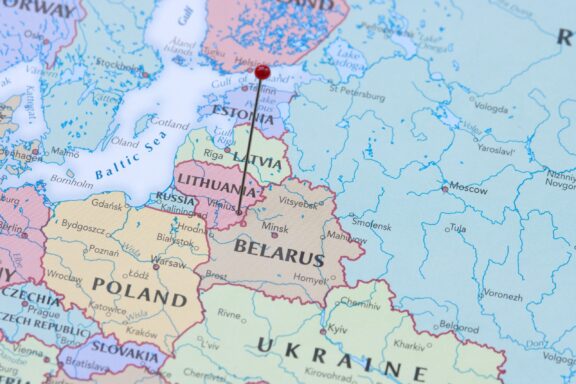
Vilnius is located in southeastern Lithuania, a country in the Baltic region of Europe. It lies at the confluence of the Vilnia and Neris rivers. Vilnius is approximately 300 kilometers (186 miles) west of Minsk, Belarus; 520 kilometers (323 miles) north of Warsaw, Poland; and 650 kilometers (404 miles) east of Stockholm, Sweden. The geographical coordinates of Vilnius are approximately 54.7 degrees North latitude and 25.3 degrees East longitude.
History of Vilnius
Vilnius has a rich and varied history, from its establishment in the 14th century to the present day.
The history of Vilnius dates back to the medieval era. According to legend, Grand Duke Gediminas was hunting in the sacred forest near the confluence of the Vilnia and Neris rivers when he dreamt of an iron wolf howling. A pagan priest interpreted the dream as a sign to establish a city called Vilnius, founded in 1323.
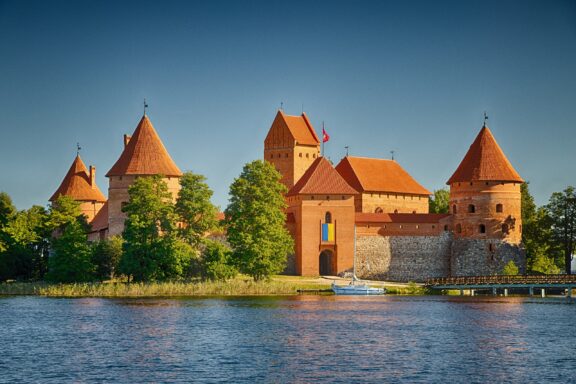
In the 14th century, Vilnius became the capital of the Grand Duchy of Lithuania, one of the most influential Eastern European states. It was a significant cultural, economic, and political center, noted for its tolerance towards different ethnic groups and religions.
In 1386, the Grand Duchy entered a union with Poland, forming the Polish-Lithuanian Commonwealth. This union resulted in Vilnius being influenced by Polish culture and the Catholic Church, despite its multiethnic character.
The third partition of the Polish-Lithuanian Commonwealth in 1795 resulted in Vilnius becoming part of the Russian Empire. The city underwent a period of Russification, although it also became a hub for the Lithuanian national revival.
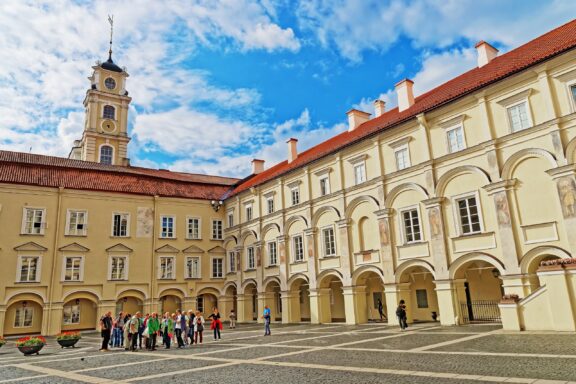
During World War I, Vilnius was occupied by Germany. In the interwar period, Poland disputed and briefly held it until World War II, when the Soviet Union occupied it and then Nazi Germany, nearly eradicating the city’s large Jewish population. After World War II, Vilnius was once again under Soviet rule.
Independent Lithuania
In 1990, Lithuania declared independence from the Soviet Union, and Vilnius became the capital of the newly independent country. Since then, Vilnius has undergone significant changes, with rapid economic development and urban modernization, while preserving its historical heritage.
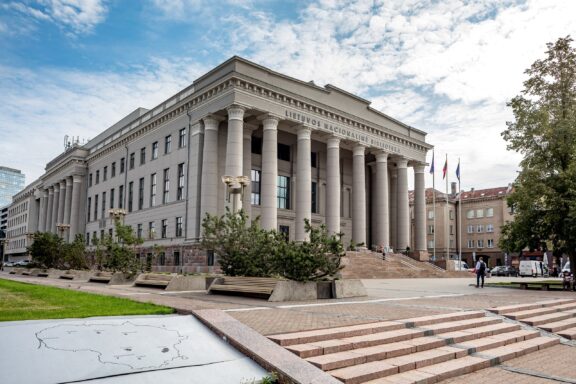
Vilnius is a vibrant and cosmopolitan city known for its architectural diversity and cultural heritage. It is a central hub for Lithuania’s economy, politics, and culture, with numerous festivals and events occurring annually. Despite the changes, Vilnius retains a strong connection to its past, with many historical sites, buildings, and museums offering a glimpse into the city’s history.
Features of Vilnius
Vilnius is known for several features and boasts a wide array of architectural styles and is a major cultural corner that hosts numerous music, film, art, and theatre festivals.
Despite its urbanization, Vilnius is noted for its green spaces. Beautiful landscapes surround the city, including lakes, rivers, and hills. Vingis Park, the city’s largest, is a popular destination for outdoor activities.
Geography and Climate
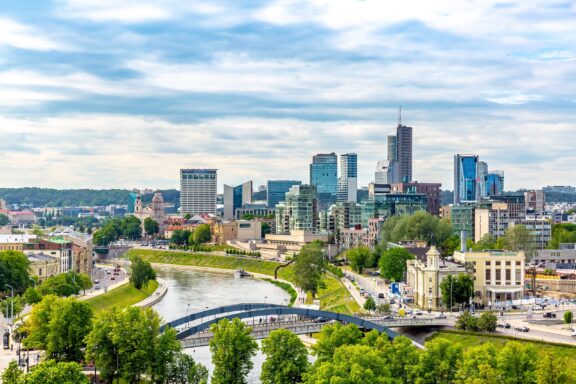
Vilnius sits on a plateau, with the city center on the Neris River’s eastern edge. The terrain is relatively flat, with a few low hills. The city has several green areas, and the surrounding countryside is forested, punctuated by 40 small lakes.
Vilnius experiences a humid continental climate. The average annual temperature is approximately 6.1 °C (43 °F), with July being the warmest month with an average temperature of about 19 °C (66 °F) and January the coldest with an average temperature of about -4.8 °C (24 °F).
The city gets significant rainfall throughout the year, typically August’s wettest month. Snowfall is common in winter, starting in November and lasting until March.
Population
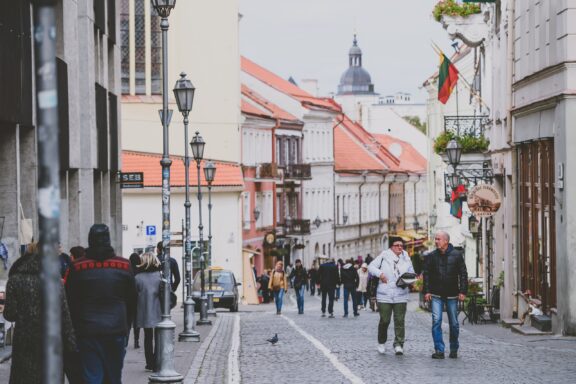
The population of Vilnius is over 700,000 people. The city is ethnically diverse, with the majority being Lithuanians, followed by sizable Polish and Russian communities and smaller groups of Belarussians, Ukrainians, and others.
Lithuanian is the official language, but English, Russian, and Polish are also widely spoken. The city is known for its vibrant culture and is a hub of education and intellectual thought, with a population generally considered educated and multilingual.
Economy
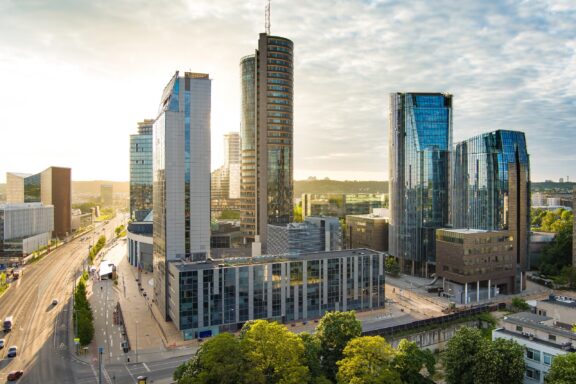
Vilnius is the economic heart of Lithuania and one of the largest financial hubs in the Baltic states. It has a diverse economy with a mix of local and international companies in various sectors. The service sector, especially information technology and business process outsourcing, plays a significant role. Vilnius is becoming attractive for global businesses to establish shared service centers.
The city is also home to a growing tech startup scene and has gained recognition as a significant hub of technology and innovation in the Baltics. This is partly thanks to the city’s educated workforce and strategic European location.
Additionally, tourism plays an important role in Vilnius’s economy. The city’s rich history, cultural heritage, and diverse architecture attract tourists worldwide. The city’s food scene, festivals, and events also contribute to its popularity as a tourist destination.
The economy of Vilnius has shown healthy growth over the years, and the city has attracted significant foreign investment.
Things to Do and Places to See in Vilnius
Vilnius offers a diverse array of experiences and attractions for visitors to explore. Here are some top-rated sites and activities you shouldn’t miss while in Lithuania’s vibrant capital city.
1. Explore the Old Town
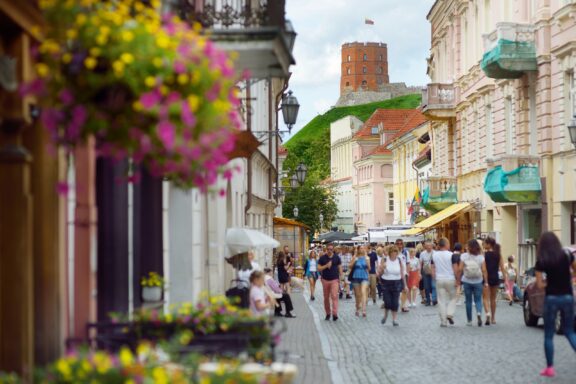
The Old Town of Vilnius is a treasure trove of historical and cultural landmarks. As a UNESCO World Heritage Site, it is one of the best-preserved medieval towns in Europe. Strolling down the cobbled streets, you can witness various architectural styles – Gothic, Renaissance, Baroque, and Neoclassical- reflecting the city’s rich history.
Every corner of the Old Town tells a story: from the well-preserved buildings to the picturesque courtyards and small boutiques, cafes, and restaurants that line the narrow streets. This is the heart of Vilnius, where history and modernity coexist harmoniously.
2. Climb the Gediminas Tower
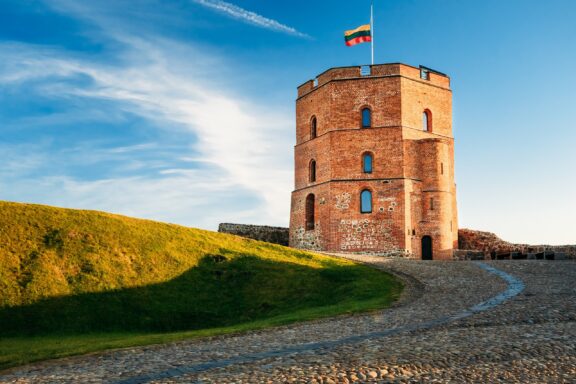
Climbing the Gediminas’ Tower is a must-do when in Vilnius. The tower is the only remaining part of the Upper Castle, symbolizing the city’s resistance and independence. From the top of the tower, you can get a 360-degree view of Vilnius, seeing how the city has evolved and expanded beyond its medieval boundaries.
Inside the tower is a museum showcasing archaeological finds from the hill and the castle’s history. The climb might be challenging, but the spectacular view from the top is worth it.
3. The Bernardine Garden
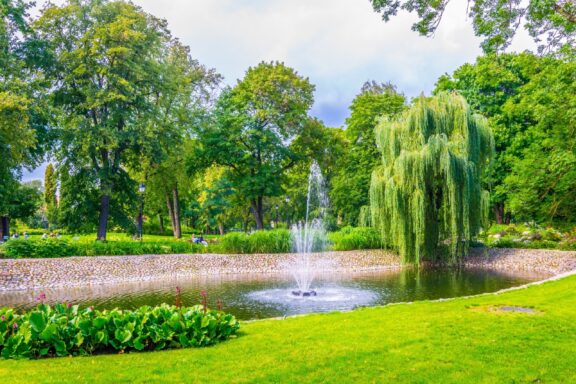
The Bernardine Garden (Bernardinų sodas in Lithuanian) is a beautiful public park in Vilnius. Located between the Vilnia River and the Old Town, it’s a peaceful oasis that offers a break from bustling city life.
The Bernadine Garden has undergone several transformations over the centuries and was redesigned in the 19th century by the famous Russian landscape architect Andrei Korneyev. In 2009, it was fully renovated and restored, bringing it back to its historic look and feel.
Today, the Bernardine Garden is divided into several sections. These include a botanical exposition featuring plants from various climate zones, a monastery exposition with species typical for medieval monastery gardens, and a park section for recreational use. One of the garden’s highlights is a large, interactive sundial calendar, one of the biggest in Europe.
4. Visit the local markets
Visiting local markets can be a fun and culturally immersive way to explore Vilnius. Here are a couple of the city’s notable markets that you might want to check out:
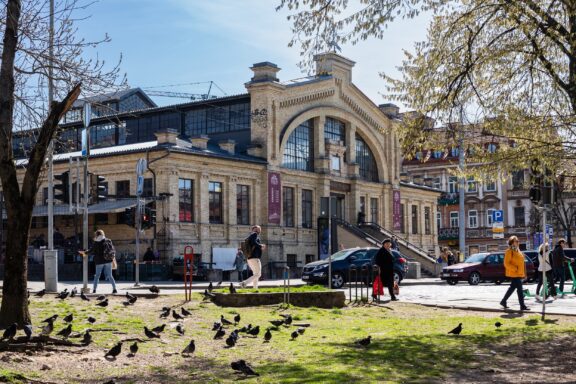
Hales Turgus: The oldest market in Vilnius and is a lively place to explore. It’s located in a large historic building that dates back to the early 20th century. The market is filled with various vendors selling fresh fruits, vegetables, meat, fish, cheese, baked goods, and more.
Local craft products, flowers, and household goods can also be found. One part of the market is dedicated to food stalls where you can try multiple Lithuanian and international dishes. Whether you’re looking to shop for fresh local produce or want to sample local cuisine, Hales Turgus offers a rich sensory experience.
Tymo Market: A popular open-air market held on the banks of the Vilnia River. It’s part of Tymo Park and operates only during the warmer months, typically from May to October. The market is a fantastic place to experience the local organic food scene.
Farmers and producers from around the region come to sell their organic produce, including fresh fruits, vegetables, dairy products, honey, bread, and more. Vendors can also sell homemade food, local crafts, and natural cosmetics. The market often features live music and other entertainment, making it a vibrant spot for shopping and leisure.
5. Visit Užupis
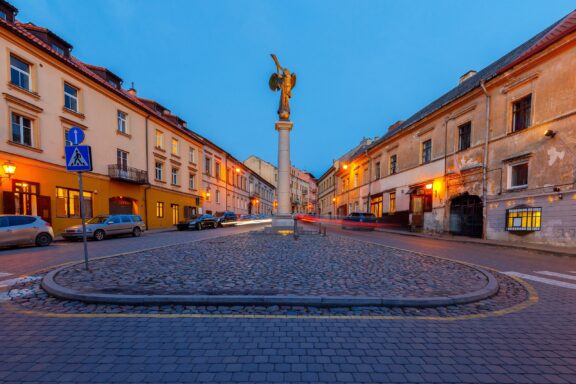
Užupis is a quirky neighborhood often compared to Montmartre in Paris or Christiania in Copenhagen. In 1997, the artists in the area declared Užupis an independent republic with its flag, currency, president, and constitution.
The constitution, translated into multiple languages on plaques in a central street, carries a distinct whimsical charm, with articles such as “Everyone has the right to understand nothing” and “A cat is not obliged to love its owner.” It’s a fascinating, creative, lively area with art galleries, workshops, and cafes. Don’t forget to visit the angel statue, a symbol of Užupis, in the main square.
6. Explore the Bastion of the Vilnius Defensive Wall

The Bastion of the Vilnius Defensive Wall is another must-see for history buffs. It is a Renaissance-style fortification located in the Old Town and provides a glimpse into the city’s past. Constructed in the 16th century, the Bastion was part of the city’s defense system, which included defensive walls and towers.
You can walk along the defensive wall, explore the various rooms of the bastion, and visit the underground tunnel system. The Bastion is also home to a museum that exhibits weaponry, armor, and artifacts from the 16th and 17th centuries.
One of the highlights of visiting the Bastion is the panoramic view of Vilnius from the upper platform. The views are spectacular, and it’s a great spot for photography.
7. Hot Air Balloon Ride
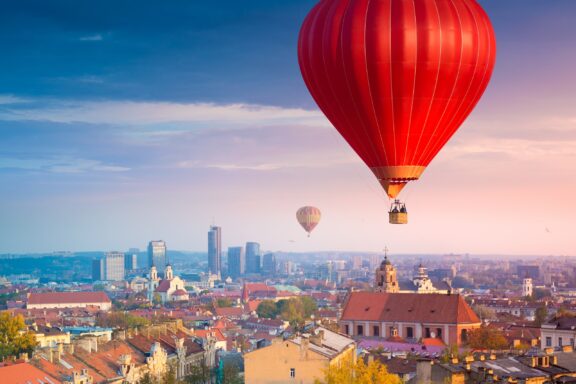
Few cities in the world allow hot air balloon rides over the city center, and Vilnius is one of them. Floating above the city, you’ll gain a unique perspective of the city and the surrounding countryside with its forests and lakes.
Balloon rides usually occur early or late evening, offering breathtaking sunrise or sunset views. This is a truly unforgettable way to see Vilnius.
8. The National Museum of Lithuania
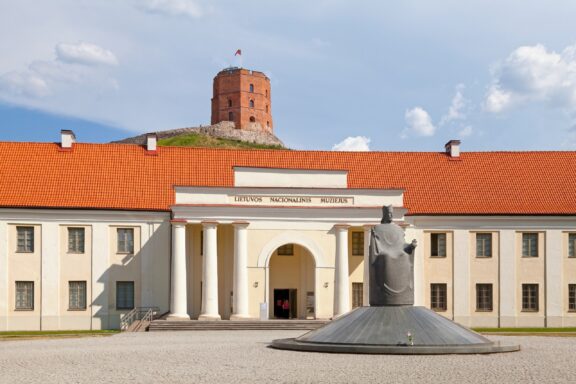
The National Museum of Lithuania is the country’s oldest and largest museum. It provides a comprehensive look into Lithuania’s history, from prehistoric times to the present. The museum houses a variety of exhibitions covering archeology, ethnography, numismatics, and iconography. Many artifacts include ancient burial finds, traditional Lithuanian costumes, and historical currency.
The National Museum of Lithuania is not just one building but an institution encompassing several important historical and cultural sites throughout Lithuania. These include the Palace of the Grand Dukes of Lithuania, the Gediminas Castle Tower, the House of Signatories, where the Declaration of Independence was signed in 1918, and the Bastion of the Vilnius Defensive Wall.
9. KGB Museum (Museum of Occupations and Freedom Fights)
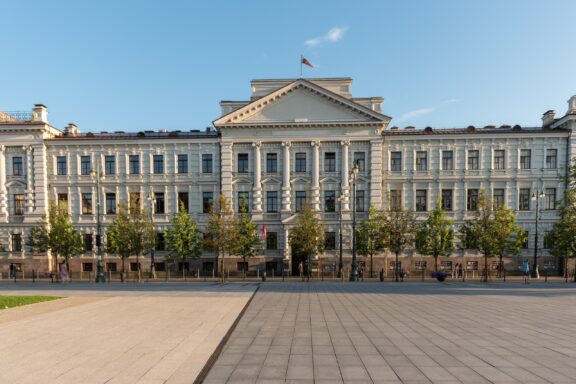
Located in the former KGB headquarters, the Museum of Occupations and Freedom Fights, or the KGB Museum, offers a sobering look into the Soviet occupation of Lithuania.
The museum tells the story of resistance, deportations to Siberia, the pursuit of freedom fighters, and life under Soviet rule. One of the most chilling parts of the museum is the former KGB prison in the basement, left almost exactly as it was during the Soviet era.
10. Gates of Dawn
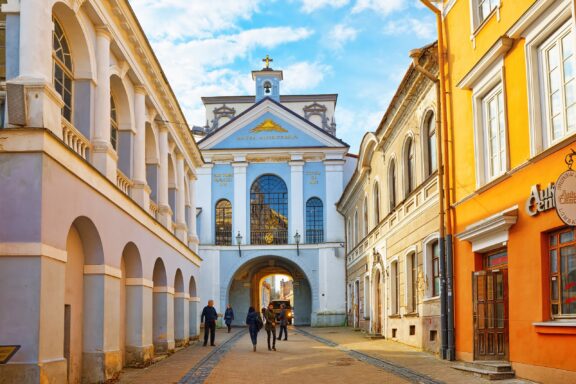
The Gates of Dawn, or “Aušros Vartai,” is one of Vilnius’s most important religious, historical, and cultural monuments. The Gates of Dawn is an important pilgrimage site for Catholic and Orthodox Christians from Lithuania and neighboring countries. It’s unique among the city gates of Europe because it houses a chapel. This architectural solution is rare and perhaps the only one in Europe.
The Chapel of Our Lady of the Gate of Dawn is above it. The chapel houses an iconic painting of the Blessed Virgin Mary, Mother of Mercy, believed to have miraculous powers. The painting is one of Lithuania’s most important religious and historical symbols.
11. St. Anne’s Church
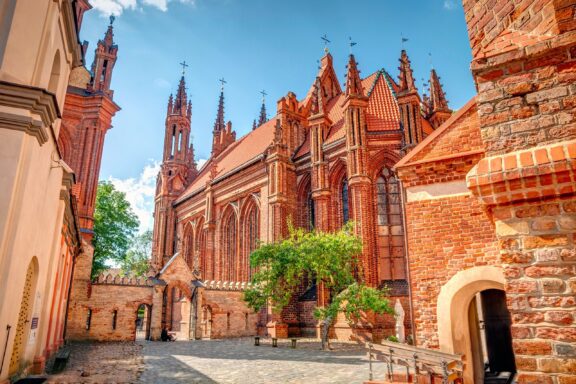
St. Anne’s Church is a masterpiece of Gothic architecture. Its intricate brickwork and detailed facades make it one of Vilnius’s most beautiful and iconic buildings. Despite numerous wars and occupations, it has preserved its unique appearance since the late 15th century. This church is a significant symbol of the city and a must-visit.
The main feature of St. Anne’s Church is its intricate facade, which is made up of 33 different styles of brick patterns and designs. This makes it one of Lithuania’s most interesting examples of Gothic architecture. Legend has it that Napoleon Bonaparte was so impressed by the church’s beauty that he wanted to take it back to Paris in his hand.
12. Vilnius Cathedral
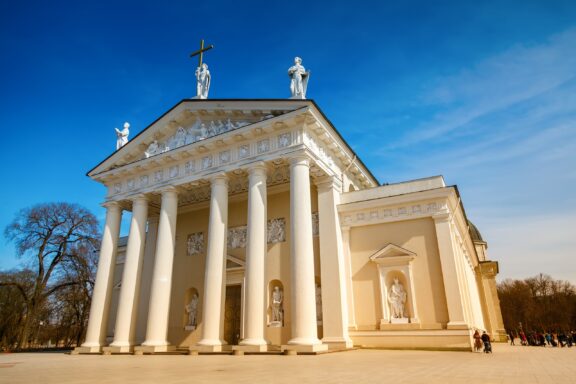
The Cathedral Basilica of St. Stanislaus and St. Vladislav, often referred to simply as Vilnius Cathedral, is one of Lithuania’s most important religious and historical landmarks. It is believed that in pre-Christian times, the site of the Cathedral used to be a place of pagan worship.
The Cathedral has undergone multiple reconstructions due to fires, storms, and wars since the original structure was erected in 1251. The current building, built in the neoclassical style, dates back to the 18th century.
The Bell Tower, standing separate from the main building of the Cathedral, is one of the oldest and tallest towers in Vilnius. The current tower, standing 52 meters high, dates back to the 16th century and offers a beautiful view over the city.
13. Church of St. Peter and St. Paul
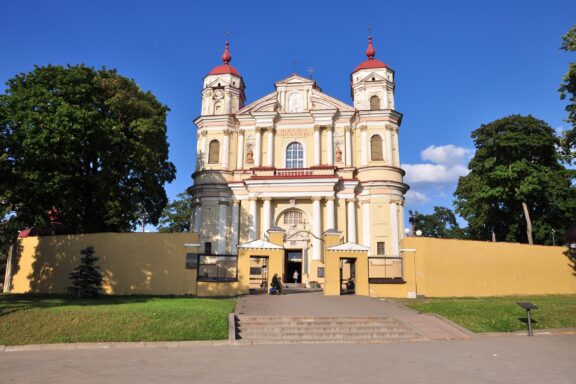
The Church of St. Peter and St. Paul in Vilnius, Lithuania, is particularly noted for its exceptional Baroque interior. Over 2,000 stucco moldings representing various religious and mythological scenes adorn the church, making it a masterpiece of Lithuanian Baroque.
The church was designed by Italian architect Giovanni Pietro Perti from Lugano, a prominent Baroque architect in the Polish-Lithuanian Commonwealth, with stucco work done by Italian sculptor Giovanni Maria Galli.
The church’s interior is monochromatic and richly decorated with scenes from the Bible and the lives of saints. Among the many unique decorations is a depiction of “The Last Judgment.”
14. Palace of the Grand Dukes of Lithuania
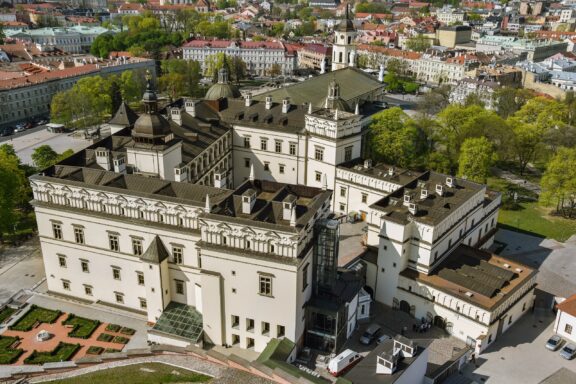
The Palace of the Grand Dukes of Lithuania was a political, administrative, and cultural center of the Grand Duchy of Lithuania from the 13th to the end of the 18th century. The Grand Dukes of Lithuania, from Gediminas to the last rulers of the state, lived there.
The Palace is located in Vilnius Old Town, the historical center of Vilnius, which is included in the UNESCO World Heritage List. Destroyed and Rebuilt: The original palace was destroyed in the 17th and 18th centuries and was left in ruins until the late 20th century. A major reconstruction project began in 2002 and was completed in 2018, recreating the palace’s former glory.
The Palace now serves as a museum, displaying historical and archaeological exhibits about the Grand Duchy of Lithuania and the history of the Palace. It also hosts temporary exhibitions, concerts, and other cultural events.
Frequently Asked Questions
What is the best time to visit Vilnius?
The best time to visit Vilnius is during the late spring and summer months, from May to September when the weather is most favorable and outdoor activities and festivals are in full swing.
What currency is used in Vilnius?
The currency used in Vilnius, as in all of Lithuania, is the Euro (€).
Is Vilnius safe for tourists?
Vilnius, like any European capital, is generally considered safe for tourists. However, as with any large city, it’s important to stay aware of your surroundings and monitor personal belongings, especially in crowded areas.
What is the food like in Vilnius?
Vilnius offers a variety of food options. The city is known for its traditional Lithuanian cuisine, often featuring ingredients like potatoes, meat, and dairy products. However, Vilnius also has a growing contemporary food scene with various international cuisines available.
How do I get around Vilnius?
Vilnius has an efficient public transportation system, including buses and trolleybuses. The Old Town is compact and best explored on foot. Taxis and ride-sharing services are also widely available.
Is Vilnius expensive?
Vilnius is generally affordable regarding accommodation, dining, and attractions compared to many other European cities. However, this can depend on personal spending habits and the current exchange rate.
Final Thoughts
Vilnius is undoubtedly worth a visit. The city gracefully blends a rich history, seen in its Old Town and numerous historical sites, with a vibrant modern culture, reflected in its burgeoning food scene, tech startups, and artistic communities. Its diverse architecture, captivating museums, picturesque parks, and unique attractions like Užupis add to its charm.
Whether you’re a history enthusiast, a nature lover, a foodie, or an art and culture enthusiast, Vilnius offers something for everyone. The city’s welcoming spirit and its people will make your visit an unforgettable experience. Overall, Vilnius is a gem of a city that provides a distinct, rewarding European city experience.
Image Sources and Copyright Information
- Pin on Vilnius, Lithuania Map: © Below the Sky/Shutterstock
- Trakai Island Castle at Dusk: © Michael Blanki/Shutterstock
- Historic University Building with Courtyard and Tour Group: © Roman Babakin/Shutterstock
- National Library Building in Lithuania: © Birute Vijeikiene/Shutterstock
- Sunny Vilnius Skyline: © Finn stock/Shutterstock
- Pedestrians on a Cobblestone Street in a Historic European City: © A. Aleksandravicius/Shutterstock
- Sunset Over Vilnius Business District: © MNStudio/Shutterstock
- Cobblestone Street in Vilnius Old Town with Pedestrians: © MNStudio/Shutterstock
- Gediminas Tower in Vilnius under blue sky: © Grisha Bruev/Shutterstock
- Serene Garden with Fountain: © trabantos/Shutterstock
- City Life and Architecture with People and Pigeons: © Birute Vijeikiene/Shutterstock
- Twilight in Užupis, Vilnius with Angel Statue: © kavalenkau/Shutterstock
- Bastion of Vilnius Defensive Wall: © Florian Augustin/Shutterstock
- Hot Air Balloon Over Vilnius Skyline: © proslgn/Shutterstock
- National Museum of Lithuania with Gediminas Tower in the Background: © BreizhAtao/Shutterstock
- Classical Building Facade with Flag: © photosounds/Shutterstock
- Historic City Gate with Pedestrians: © V_E/Shutterstock
- Gothic Architecture of St. Anne’s Church: © Ana Flasker/Shutterstock
- Vilnius Cathedral Facade on a Clear Day: © Anna Lurye/Shutterstock
- Baroque Church Facade on a Sunny Day: © Wojtek Chmielewski/Shutterstock
- Aerial View of the Palace of the Grand Dukes of Lithuania: © amiklyte/Shutterstock